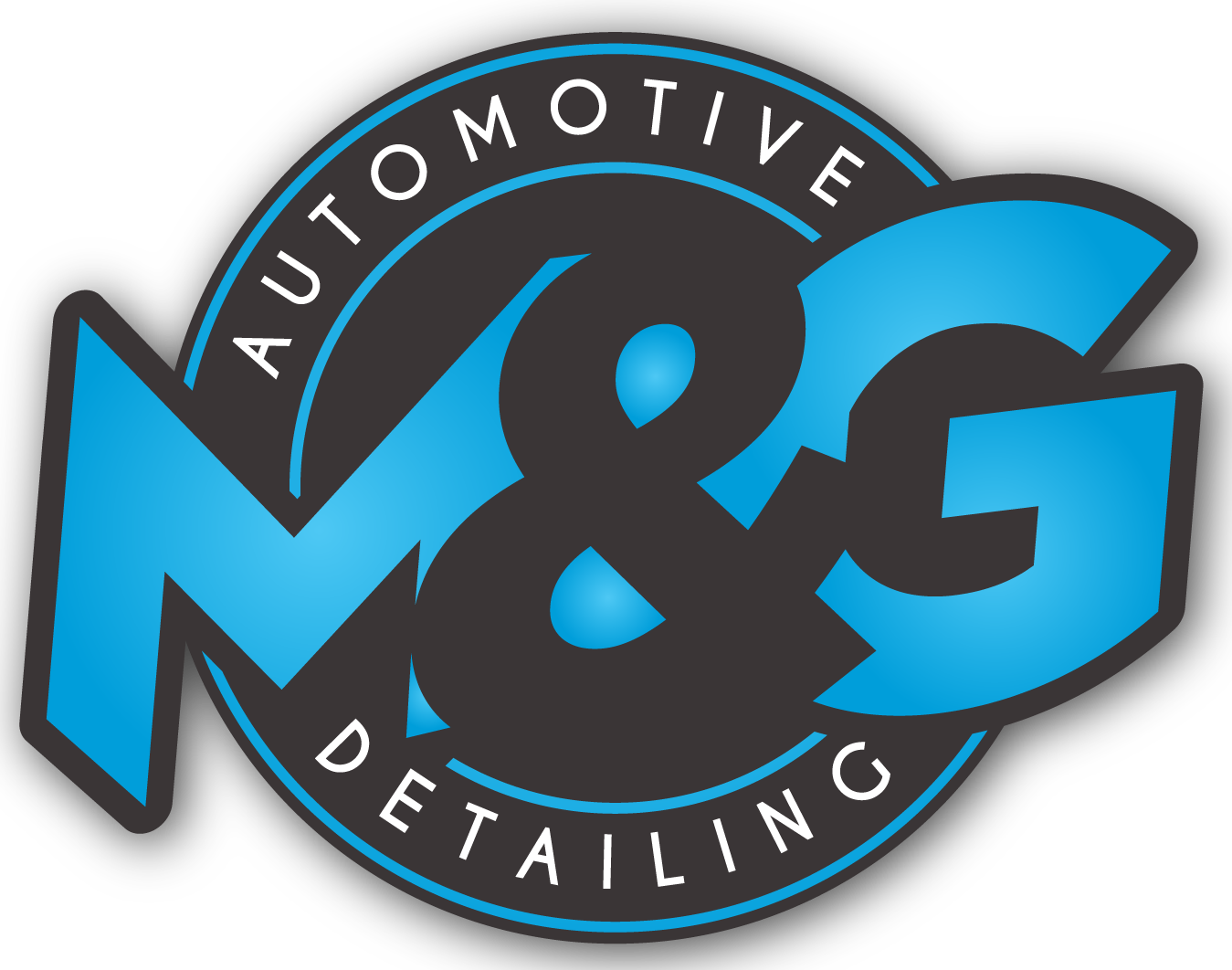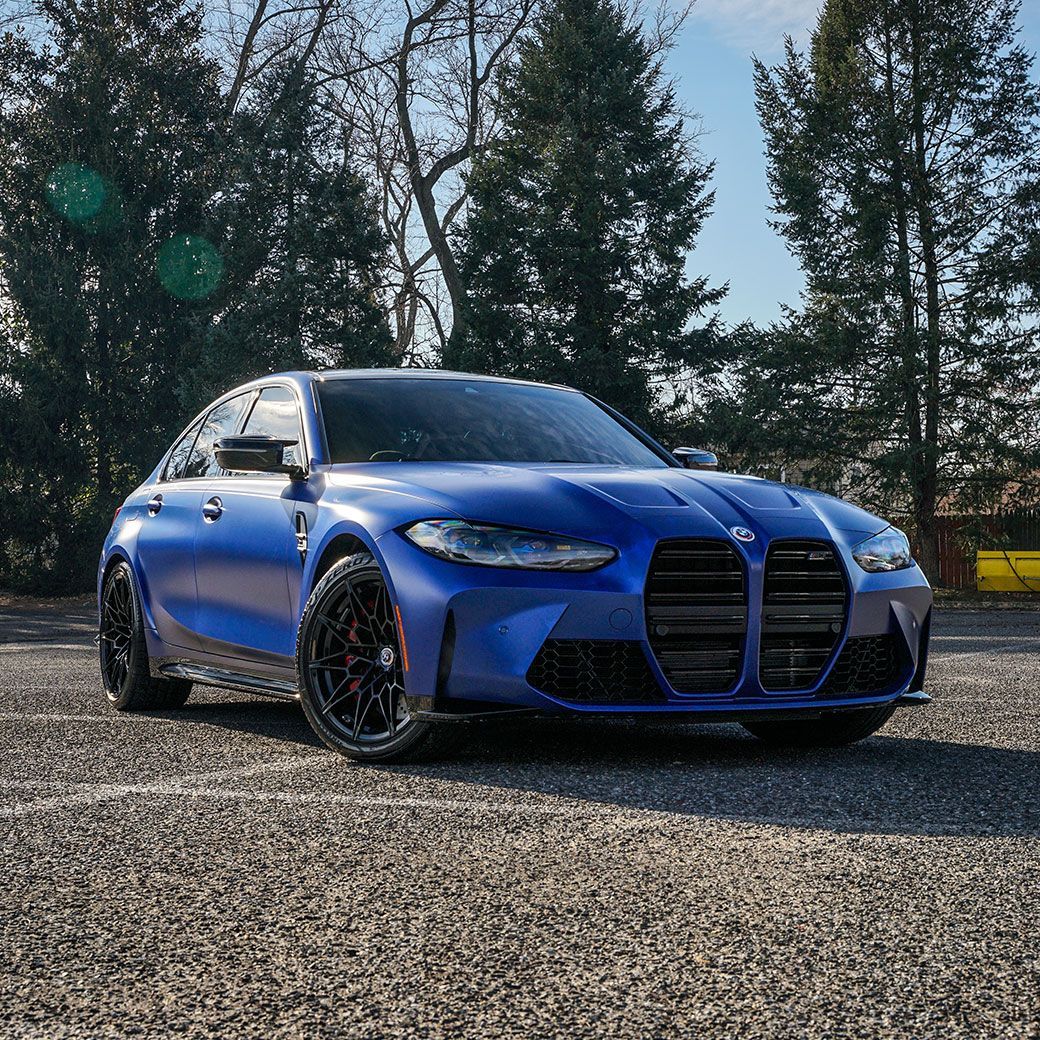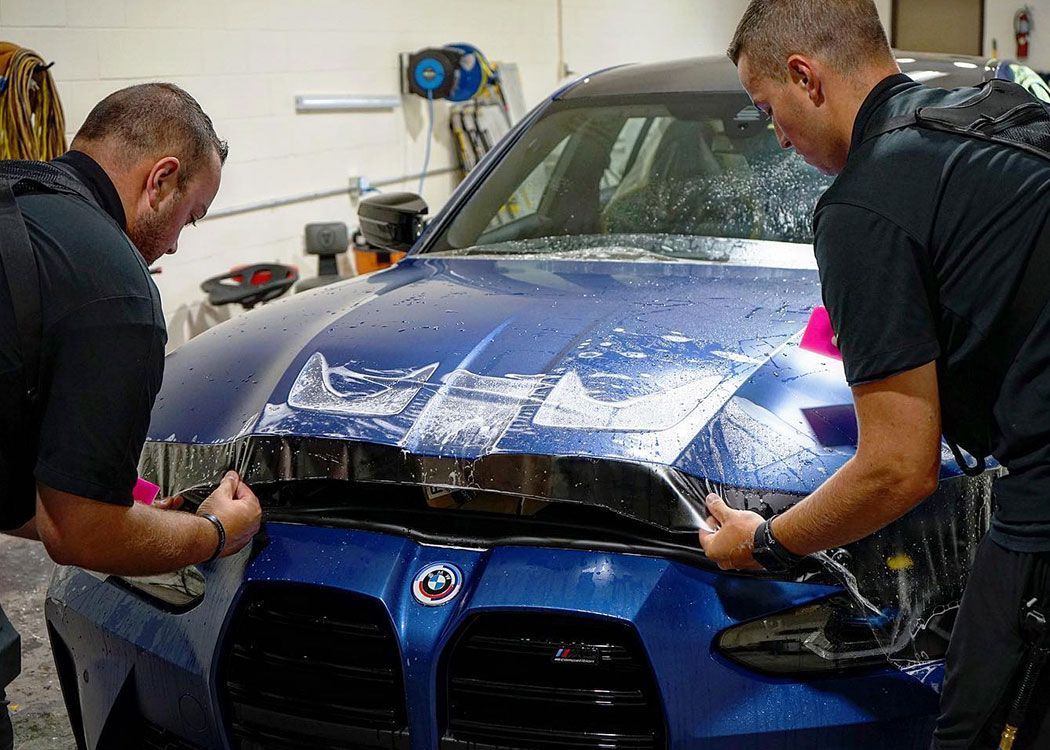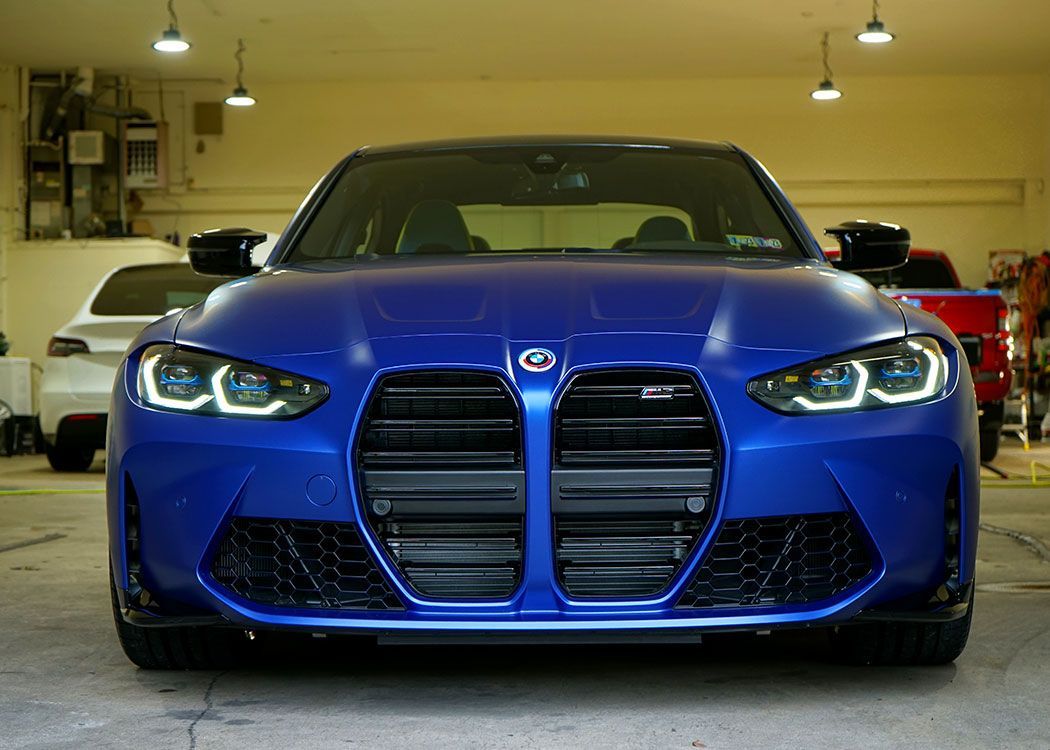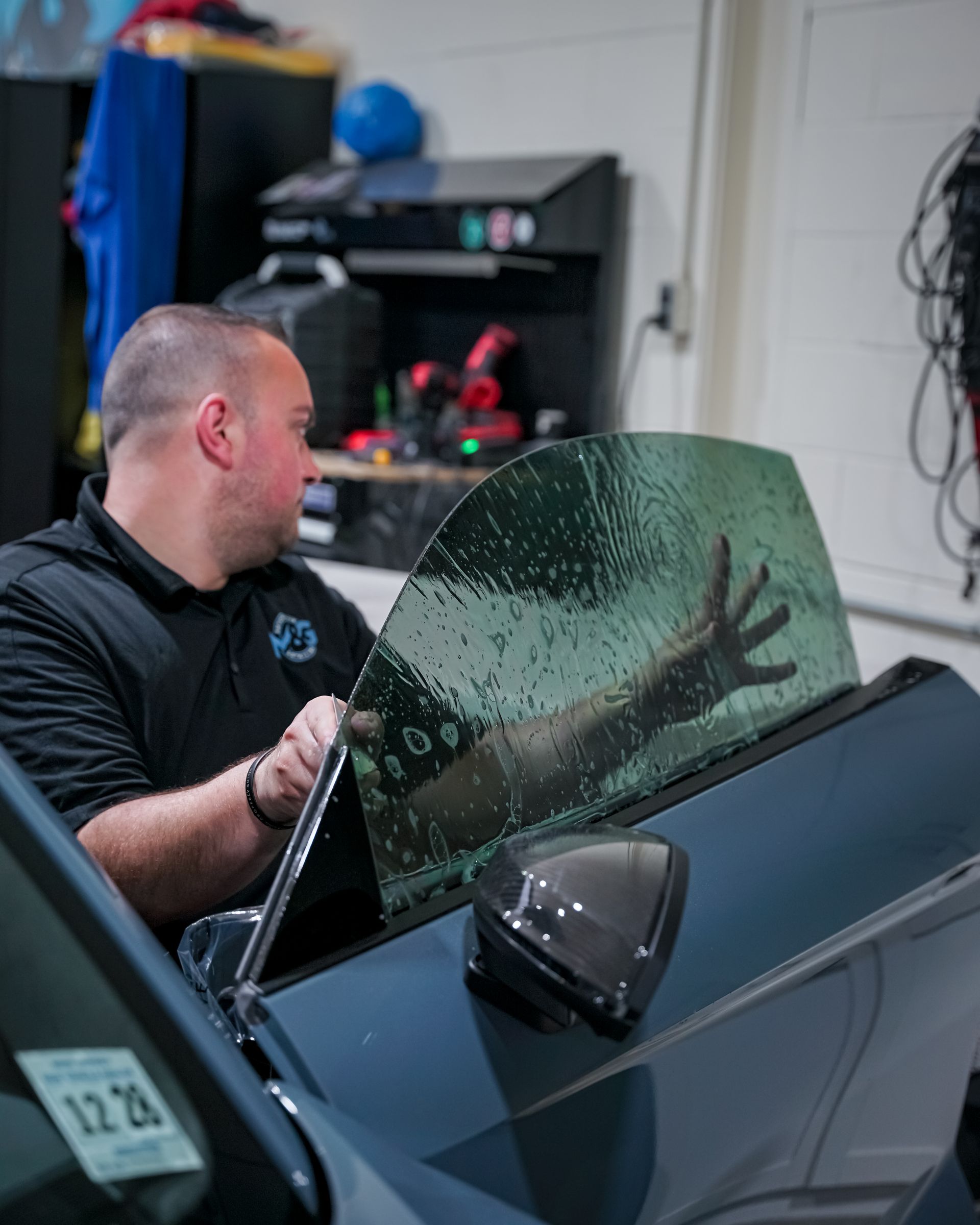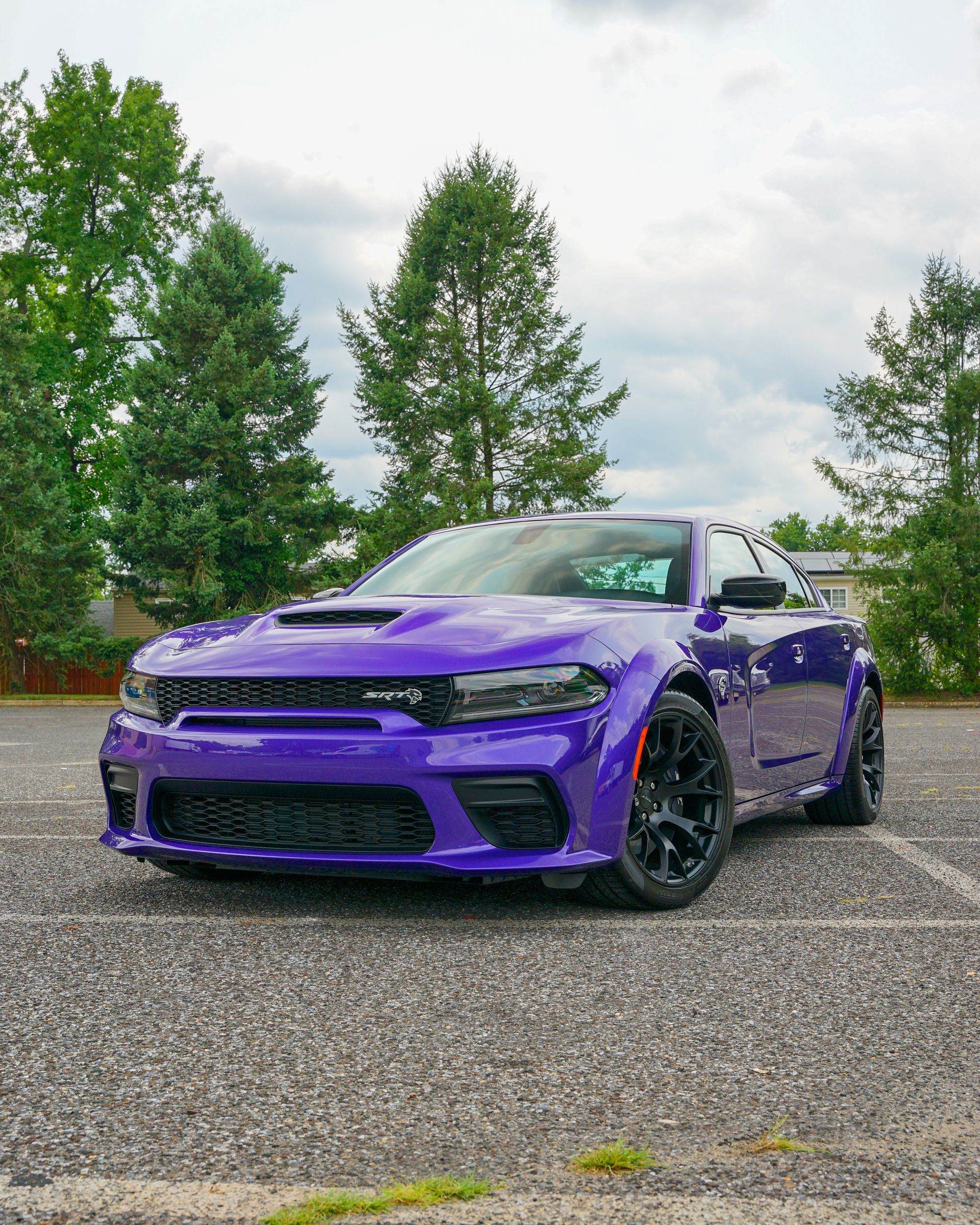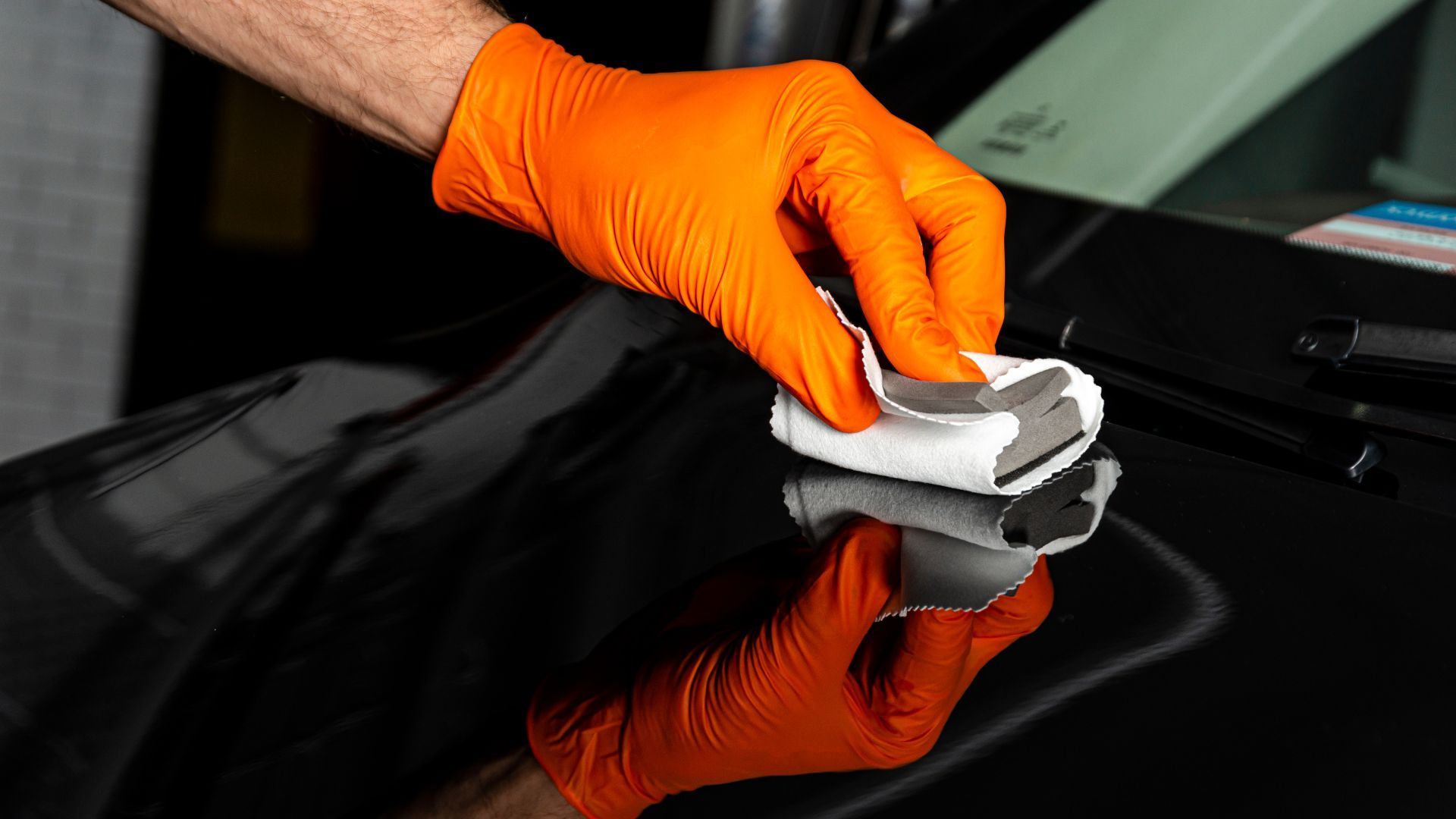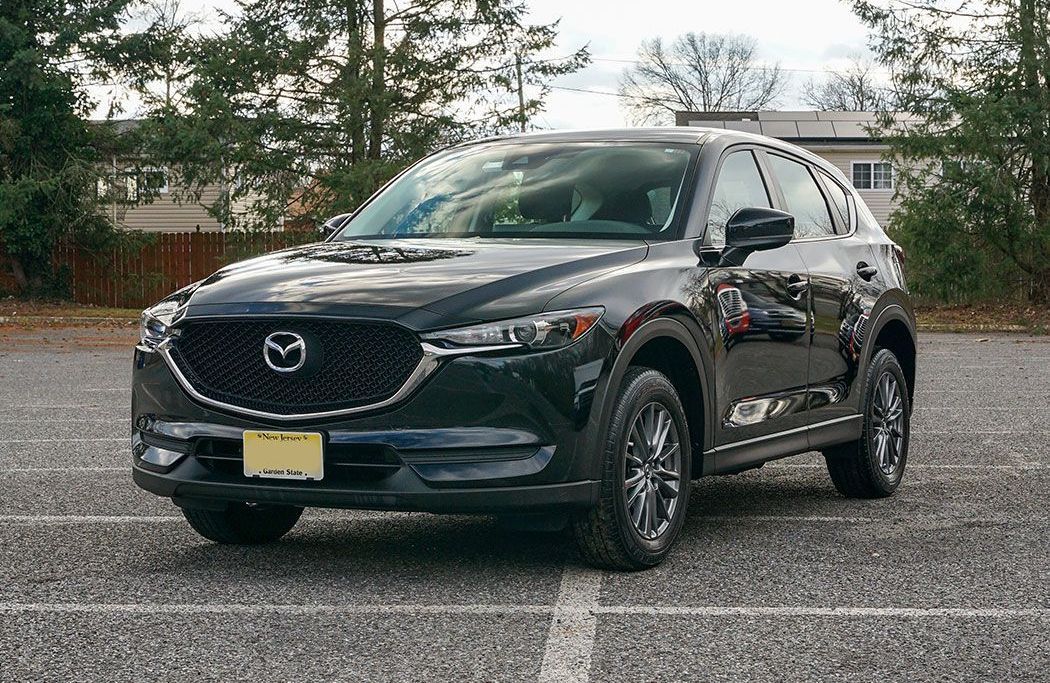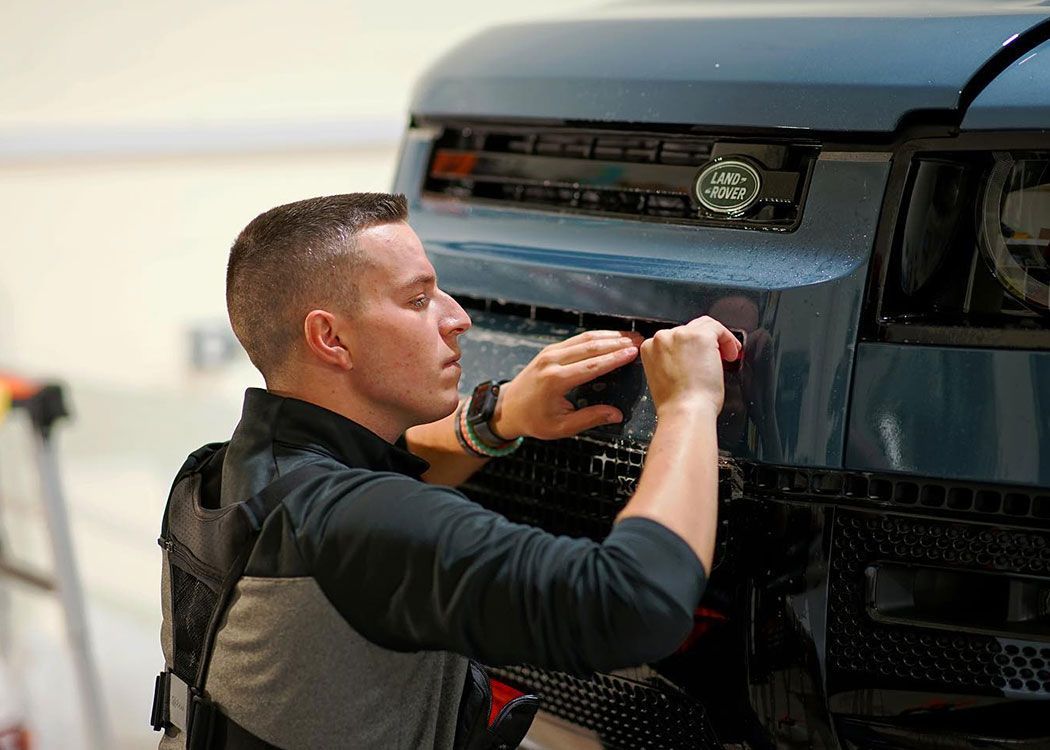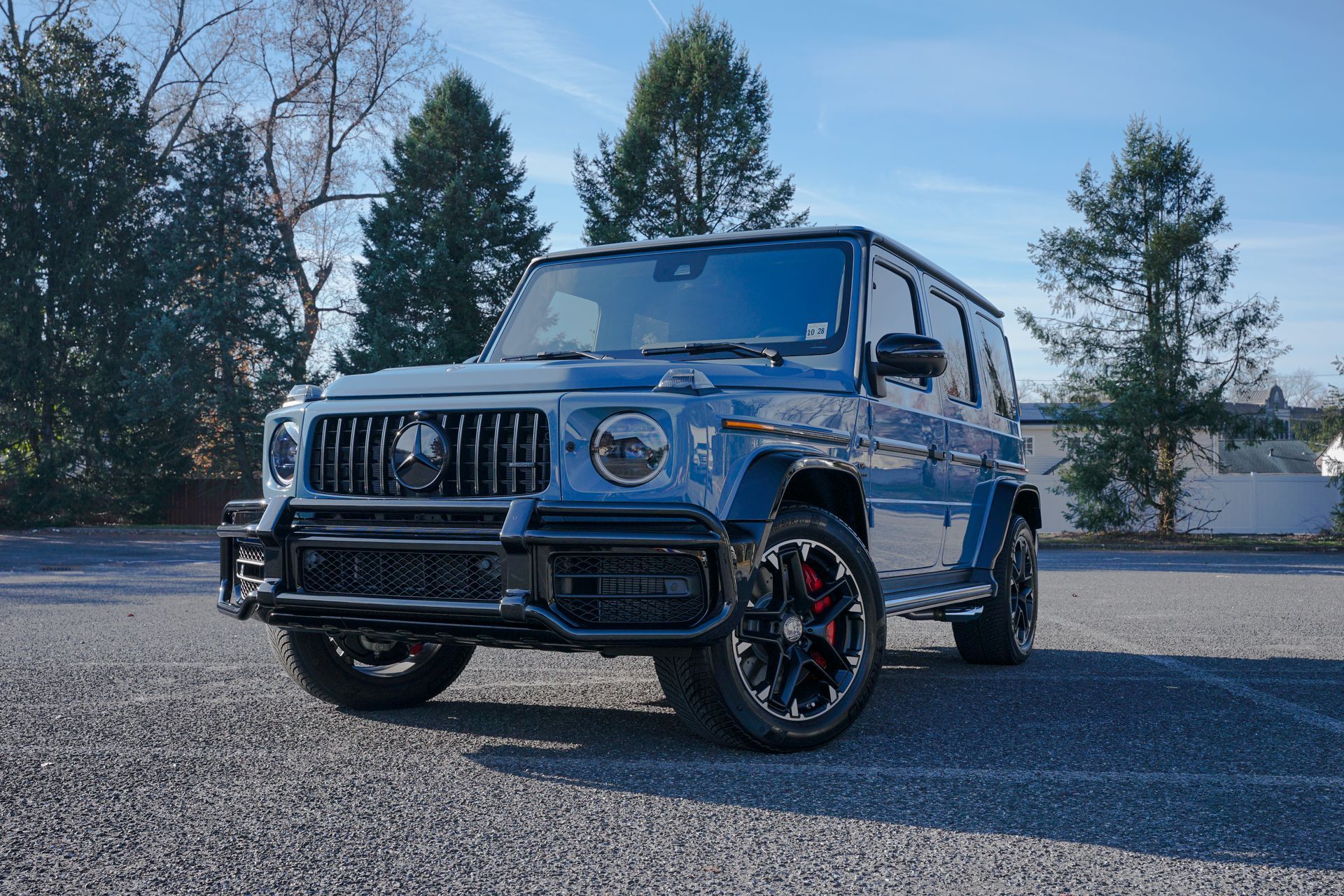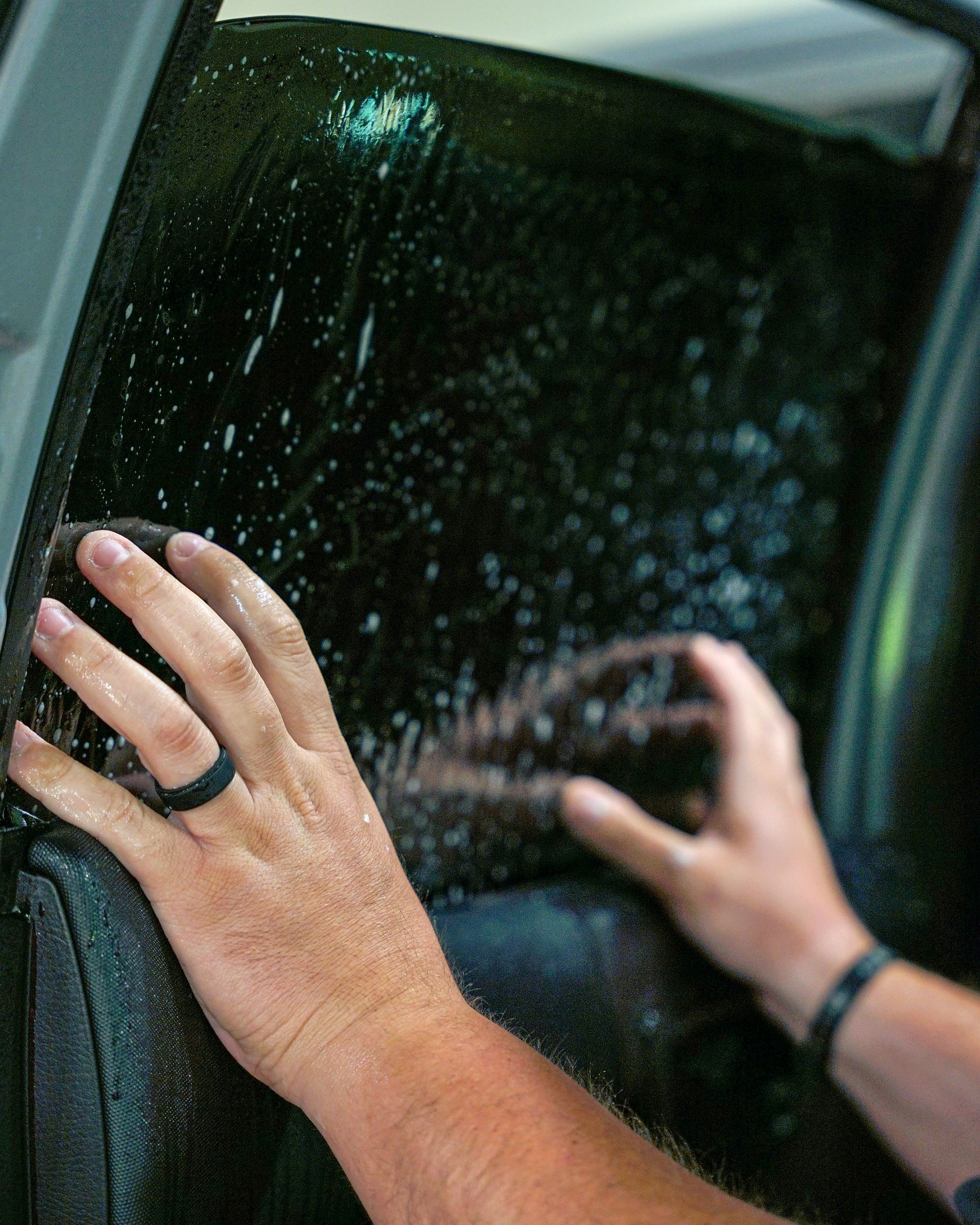The Role of Paint Protection Film in Protecting Your Car from Pollutants: Benefits and Tips
Paint protection film serves as a tough shell for your car, holding back nasties like dirt and soot that hover around. This protective cover fools the pollutants, taking the hit itself instead of your beloved ride's smooth paint. Instead of ending up scratched or etched, your car remains unharmed, just like a diamond safe inside its sturdy jewelry box. Now, doesn't that make you feel warm inside out? Well, it just gets better.
Paint protection film acts as a shield, forming a protective barrier against pollutants such as bird droppings, tree sap, and other corrosive substances. This transparent film not only prevents damage to the car's paint but also helps maintain its aesthetic appeal amidst various environmental hazards.
Role of Paint Protection Film in Pollutant Defense
When you're out driving, your car's paintwork is constantly exposed to all kinds of pollutants—dust, dirt, road debris, and other microscopic particles floating around in the air. These particles do more than just make your car look dirty; they can also cause damage to the paint, leaving behind scratches and dulling the finish. This is where paint protection film comes in. PPF acts as a safeguard for your car's paint, creating a protective barrier that shields it from the harmful effects of these environmental pollutants. It's like having a suit of armor for your vehicle, absorbing impacts and preventing damage to the underlying paint. This means that even if your car comes into contact with dust or road debris, it'll be the film that takes the hit, not your actual paint.
This preservation of your vehicle's appearance isn't just for aesthetics; it also plays a significant role in maintaining the resale value of your car. A well-maintained exterior can greatly impact the overall value of your vehicle when it comes time to sell or trade it in. Additionally, paint protection film offers resistance to UV rays, preventing color fading and ensuring that your car's paintwork maintains its vibrant appearance over time. UV protection is particularly important for cars exposed to sunlight regularly, as it helps prevent discoloration and keeps the exterior looking fresh. If you frequently drive in areas with high levels of dust or encounter loose gravel on rural roads, a clear bra can be an invaluable asset in keeping your car looking pristine despite these harsh conditions. It's clear that PPF serves as an essential defender against environmental pollutants, acting as a shield that absorbs impacts and preserves your car's showroom-ready appearance.
Particulate Pollutants and Paint Protection Film
Imagine your car. It displays a glossy coat that, when exposed to the sun, emits a mesmerizing sparkle. However, lurking beneath this allure are airborne threats like dirt, soot, and minute particles suspended in the air. When these invaders descend onto your vehicle's surface, they aren't just harmless dust; they can manifest as more serious troubles. The abrasiveness of these pollutants can result in scratches, etching, and an overall lackluster appearance of your car's exterior.
Now, how does PPF combat this menace? Think of it as an invisible shield encasing your car. As the airborne particles make their journey toward your vehicle, they first encounter this protective film. Rather than causing direct harm to your car's paintwork, the film intercepts them, averting any potential damage that would otherwise come from contact with your car's surface. This means that instead of etching or scratching the paint, these pollutants meet a resilient barrier that safeguards the luster and integrity of your car's exterior.
The Role of Clear Bra in Preserving Your Car's Shine
Without a paint protection film safeguarding against such contamination, those airborne particles could easily create unsightly marks on the surface of your car. These marks might eventually worsen into scratches and blemishes that detract from the overall appearance of your vehicle. By having a layer of PPF in place, you're essentially giving your car an extra layer of armor against the constant bombardment of these minuscule threats. Beyond just preventing physical harm to your vehicle's exterior, this layer also contributes to retaining the original shine and vibrancy of your car's paintwork. By doing so, it upholds the aesthetic appeal and ensures that even after years on the road, your car maintains its showroom-worthy finish.
Imagine taking your journey through picturesque landscapes or bustling city streets. Despite encountering various environmental pollutants along the way, including dust and soot from nearby vehicles or construction sites, your car's exterior remains unblemished and continues to radiate brilliance due to the protective benefits of PPF. Understanding how paint protection film serves as a crucial defense against particulate pollutants underscores its significance in preserving the longevity and aesthetics of your vehicle's paintwork and imparts reassurance knowing that it shields against everyday environmental hazards.
Paint Protection Film's Impact on Vehicle Lifespan
Your car is a prized possession, one that should last for many years. A paint protection film acts as a protective shield, standing guard against the wear and tear caused by environmental elements. By shielding your vehicle from pollutants, acid rain, bird droppings, tree sap, and other airborne contaminants, PPF contributes to extending the lifespan of your car's exterior. Paint is prone to damage over time due to exposure to environmental hazards. However, with a clear bra in place, the risk of paint deterioration decreases significantly. This means fewer frequent repaints or touch-ups, allowing your car's factory finish to remain intact and vibrant for a longer period of time. As a result, the overall value of your vehicle is preserved, contributing to its longevity and desirability in the long run.
When you consider the costly nature of repainting an entire vehicle or repairing extensive paint damage, it becomes evident that
installing PPF is an investment in the long-term aesthetics and durability of your car. Paint protection film reduces the need for frequent repaints or touch-ups, thereby preserving the car's factory finish and overall value. Remember that time you saw a vintage car that still looked like it had just rolled out of the showroom? It likely had film protecting its paintwork. The science behind PPF ensures that your car remains protected while retaining its original beauty. This level of preservation ultimately defers significant costs associated with paint repairs, giving you peace of mind about maintaining your vehicle's appearance without breaking the bank. It's clear that PPF doesn't just shield your car from pollutants; it safeguards its longevity and preserves its resale value.
Practical Tips for Using Paint Protection Film
Installing a paint protection film on your car is just one part of the equation. If you want it to perform optimally, then ensuring proper installation is crucial. A professional PPF installation guarantees comprehensive protection for your car, with precise coverage and no vulnerable areas left exposed. When it comes to installation, the process includes precise cutting and stretching of the film to fit the contours of your vehicle; experienced installers pay particular attention to intricate corners and edges. This meticulous approach ensures a seamless shield against pollutants, minimizing the risk of paint damage over time.
Moreover, a reputable paint protection film installer will use high-quality films known for their superior industry standards. This quality, combined with expert installation, results in long-lasting protection for your vehicle's paintwork. Apart from installation, maintaining the film is equally important in ensuring longevity and effectiveness. Like having armor for your car, while it works well without maintenance, a little care can help it serve you better for longer.
Regular Cleaning
Similar to caring for your car’s exterior, maintaining your paint protection film involves regular cleaning to remove dirt and pollutants that accumulate over time. However, when cleaning this protective film, it’s crucial to use gentle washing techniques to avoid damaging the film. For instance, using a pH-neutral car shampoo and a microfiber wash mitt can effectively clean the film without causing any harm. Avoid abrasive cleaners that may cause tiny scratches or dullness on the film's surface. Tip: Regular waxing of your paint protection film maintains its glossy appearance and reinforces its protective properties.
Inspection for Damage
Regular inspection is another essential aspect of paint protection film maintenance. Keep an eye out for any signs of damage, such as tears or punctures in the film. Addressing these issues promptly will prevent pollutants from seeping through and causing damage to your car's paintwork underneath. An annual inspection is often recommended to catch any potential problems early on. The diligence in regular checks emphasizes how swiftly addressing damages preserves the protective qualities of the film. Identifying and addressing damages promptly not only maintains the effectiveness of PPF but also avoids costly repairs caused by prolonged exposure to pollutants and environmental hazards.
Pros and Cons of PAINT PROTECTION FILM for Cars
You've heard about how paint protection film (PPF) acts as a suit of armor for your car's paintwork, preserving its resale value and keeping it looking showroom-ready. But what are the specific advantages and potential drawbacks when it comes to investing in this protective upgrade? Let's start with the advantages:
- Protection Against Environmental Pollutants: PPF serves as a barrier against various environmental hazards like bird droppings, tree sap, and road debris, which can cause significant damage to your vehicle's paintwork over time.
- Preservation of Factory Finish: By shielding the car's original paint from wear and tear, paint protection film enhances the longevity and quality of the factory finish, maintaining the vibrant appearance and contributing to the vehicle's resale value.
- Reduction in Maintenance Costs: The use of paint protection film diminishes the necessity for frequent repainting and associated maintenance costs, offering long-term cost savings by safeguarding the car's external aesthetics.
When considering these advantages, it's important to remember that protecting your car from environmental pollutants effectively means less worry about color fading, scratches, or stains. The science behind PPF ensures that your car remains protected while retaining its original beauty. So, in essence, it's not just a protective layer; it's peace of mind. Now, let's consider some potential drawbacks:
- Initial Investment Cost: The initial cost of applying for PPF can be relatively high, particularly for a full-car application, potentially acting as a deterrent for some individuals. This often leads to debates about whether full PPF is worth it unless you frequently track the car. Many believe that partial front coverage provides sufficient protection while being more cost-effective.
- Variability in Installation Quality: The effectiveness of the paint protection film is heavily reliant on the quality of the installation. Some may encounter issues if not properly installed, impacting the overall protective capabilities of the film.
- Regular Maintenance Requirements: While PPF offers extensive protection, it requires regular maintenance and inspection to ensure continued efficacy. This involves monitoring its condition to address any potential issues promptly.
The concern over maintenance raises practical questions for car owners. It prompts considerations like finding reputable installers who can ensure quality installation to enjoy the full benefits of the film. Moreover, regular inspection becomes an essential part of maintaining the protective properties of PPF over time. While acknowledging these potential challenges associated with paint protection film, it's evident that the benefits outweigh the drawbacks. When utilized efficiently and accompanied by regular upkeep, PPF plays a pivotal role in safeguarding your car against a multitude of environmental factors, ensuring that your vehicle retains its pristine allure for years to come while minimizing maintenance costs in the long run.
Paint Protection Film Service in Haddonfield, NJ
Discover the epitome of automotive protection with M&G Automotive Detailing, your go-to destination for
top-notch paint protection film services in Haddonfield, NJ. Our dedicated team of experts is committed to preserving the beauty and integrity of your vehicle's exterior through cutting-edge PPF technology. Shielding your prized possession from road debris, stone chips, and environmental factors has never been more crucial, and M&G Automotive Detailing stands at the forefront of delivering unparalleled expertise. Trust us to safeguard your vehicle's finish with precision and care, ensuring a seamless and resilient shield that doesn't compromise on aesthetics. Elevate your driving experience and secure your investment by choosing M&G Automotive Detailing for the highest standard of PPF services in Haddonfield, NJ. Schedule your appointment or call us at
(609) 923-3123 now and experience the pinnacle of automotive protection and care!
